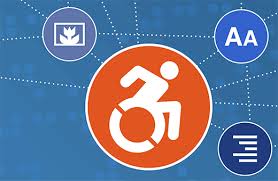When developing WordPress sites, attention is often paid to designing an attractive design, writing good content, and installing the best plugins. But the accessibility of the website is something that is often overlooked. And that while an accessible WordPress site is very important.

The importance of an accessible WordPress site
Is it mandatory to make your WordPress site more accessible? Not that. It is also not a ranking factor, such as mobile friendliness. Access accessibility is intended to exclude visitors with visual, auditory or cognitive impairment. Research indicates that as many as 1 in 5 people have a limitation. If your site is not accessible to you, you can lock out 20% of your potential users or customers without having to leave. Blind, sighted, deaf and cognitive limited visitors should actually be able to navigate effectively through your site. The more people access your content or settings (such as contrast and text size) can be customized to their preference, the greater your reach.
Offer clear, distinct navigation
This includes clear titles, sequential ordering, contextual linking, multiple link paths, and descriptive headings. An SEO plugin can actually be really helpful in achieving these accessibility points. You see, SEO requires that your content be clear and offer logical navigation, too.
Make Your Site Robust
A robust site is one that has thought of everything. Does yours meet the needs of as many people as possible in as many ways as possible?
Offer compatibility with assistive technologies. That means your HTML is beyond clean with start and end tags, no duplicate attributes, and unique IDs. You need clear headers and paragraph elements so the content appears as it should on screen readers. Basically, fancy HTML should be avoided. Want to add style? Use CSS. Otherwise, let basic formatting serve your content well.
What makes a website accessible?
- Website accessibility is about optimizing your website, with the goal of making it accessible to as many people as possible. For example, think of:
- Keyboard support: Visually impaired visitors should be able to use the keyboard to navigate.
- Text alternatives: Visitors must have textual alternatives to non-textual content (think of a podcast transcript).
- Reading mode: Visitors must be able to switch between normal mode and read mode.
- Support for ARIA: By implementing the necessary landmarks, you can tell assistive technologies what’s on the page, where the user is on the site and what the next steps are.
If you want to know how accessible your website is, you can check that with this Web Accessibility Evalution Tool. Are you convinced of the importance of an accessible WordPress site, but do you think your site is not accessible enough? Tomorrow we will give you some tips to improve!







